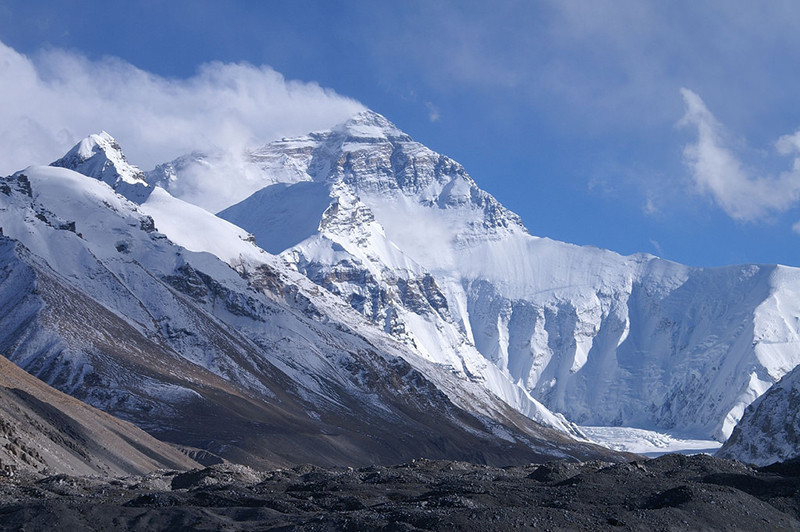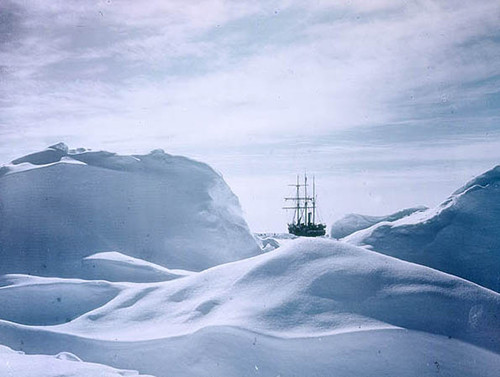
16 Nov The 2015 Movie “Everest” and Other Risky Films

According to author Jon Krakauer, climbing Mount Everest doesn’t require the skill it once did. For the right amount of money, you can pay someone to take you to the top. Do movies inspire average people to take on risks they shouldn’t? ©Rupert Taylor-Price, flickr
The adventure movie Everest opened on September 2, 2015. It tells the story of the infamous 1996 tragedy on the mountain, an event that also inspired author John Krakauer’s 1997 book, Into Thin Air. The film’s producers are hoping that their creative endeavor will captivate a whole new generation of adventure enthusiasts.
But will the film be so enthralling that it will kick-start yet another trend where average people think physically risky travels to Everest (for those with the money) or to other places are right down their alley?
It’s not so out of the realm of possibility. It’s happened before with other movies. According to Krakauer’s book, commercial competition and overcrowding on the upper mountain in 1996 were the root cause of several serious problems and even deaths. People who shouldn’t have been on the mountain—inexperienced clients who didn’t know how to put on crampons or who expected Sherpas to carry along their espresso makers—were. Everest has become more of a check mark on a list or a notch in the belt than a true mountaineering adventure feat. And the craze hasn’t stopped: barely a year after Everest’s worst disaster killed 16 Sherpas in an avalanche, the 2015 climbing season began with a record number of climbers—359—and expectations are that 2016 will draw another large crowd.
Hazardous journeys

A glimpse of Shackleton’s ship, the “Endurance,” photographed in Antarctica in 1915 by Frank Hurley. State Library of New South Wales, flickr
Ever since the explorers of old used oral storytelling, flyers and published journals to spread word of streets lined with gold, fountains of youth or rich silks and spices, people have been using mass media to motivate others to go on adventures. A hundred years ago, even Ernest Shackleton promised “honor and recognition” in an ad in the London press to any adventurer who would sign up to go with him on an attempt to cross Antarctica via the South Pole:
“Men Wanted for Hazardous Journey. Small wages, bitter cold, long months of complete darkness, constant danger, safe return doubtful. Honour and recognition in case of success.”
In those days, however, most of the people who took the bait expected a testing of their mettle and knew that they would be taking on an adventure that would push them to their physical limits. Today, however, with the ubiquitousness of films, average people are being inspired to go on dangerous journeys—thinking they’ll be safe. Sometimes, that isn’t the case.
It’s clear that locations depicted on-screen often see a boost in tourism. Perhaps the top prize for the movie that inspired the most real-life adventures has to go to Into the Wild. Since that film premiered in 2007, year after year, a steady stream of unprepared people have risked their lives and trekked through Denali National Park in Alaska in hopes of reaching the bus where Christopher McCandless starved to death. And each summer since then, rescuers have recovered at least half a dozen lost hikers on McCandless pilgrimages.

This school bus is a replica of the one that Chris McCandless lived in. It was used for the filming of “Into the Wild.” ©Madeleine Deaton, flickr
Filmed fissures
In 2011, a 64-year-old man hiked into Utah’s Lower Blue John Canyon. He slipped and fell ten feet, breaking his left leg and dislocating his right shoulder. Three days later, a National Park Service patrol found his car. The next morning, a helicopter crew spotted him crawling across the desert, about four miles from the site of his accident. Why had he gone to the Lower Blue John Canyon? He reported he had been inspired by the 2010 release of 127 Hours, the movie starring actor James Franco that was based on the experience of Aron Ralston, the man who got trapped in that canyon by a falling rock and was forced to amputate his arm. Before 2010, when the movie was released, the fissure was only known to serious canyoneers and people who’d read Ralston’s 2003 memoir, Between a Rock and Hard Place.
According to an article in the Los Angeles Times published on September 25, 2015, Jon Krakauer recently stated that climbing Mount Everest isn’t real climbing anymore; it’s merely rich people climbing. “It’s a trophy on the wall, and they’re done,” writer Amy Kaufman quotes Krakauer as saying. “When I say I wish I’d never gone,” Krakauer states, “I really mean that.”
Has an adventure film ever inspired you to take a particular trip? Has a movie ever motivated you to try an activity you thought might be beyond your physical abilities? What was the result?
Here’s to your (safe) adventures, in whatever corner of the world you find them,
Candy
Latest posts by Candice Gaukel Andrews (see all)
- 10 Reasons Why a Dose of Fear Is Good for You - December 13, 2017
- Extinction Tourism: Seeing Wild Animals Before They’re Gone - November 8, 2017
- The Travel Cycle’s Four Stages—Plus One - October 18, 2017




No Comments